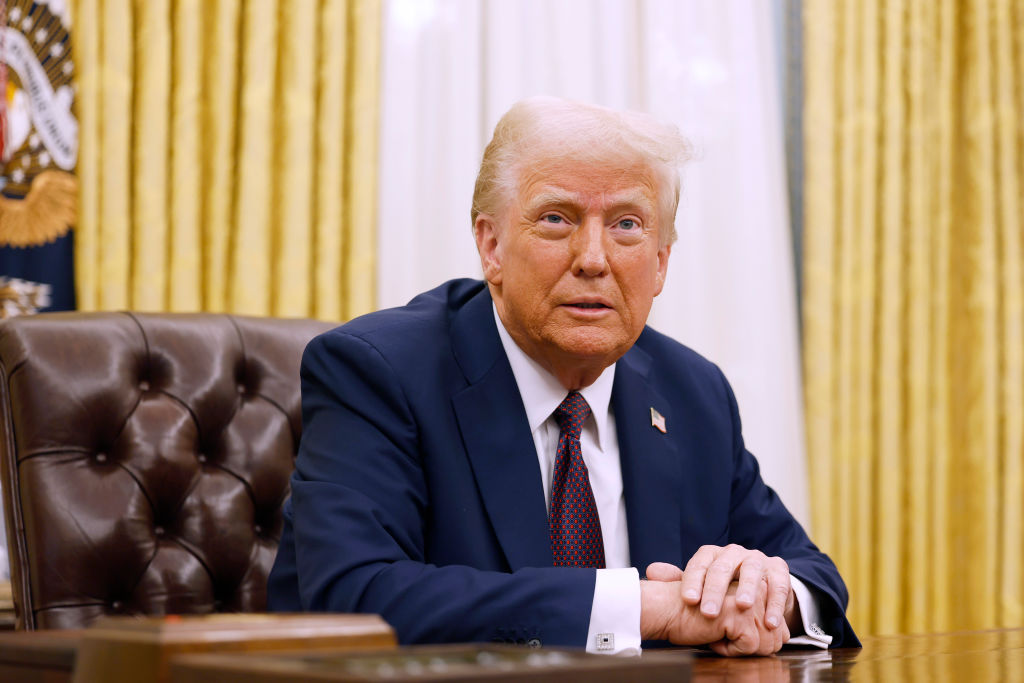Markets' Scary Week Fueled by Fear, Not Fundamentals
When emotion rules the markets, watch out.

It's been a scary week, but what scares me more than any stock price or bond spread is masses of investors selling on fear instead of fundamentals.
Yes, the nosedive on Wall Street is troubling. The stock market has accurately foretold eight of the last nine recessions, and many people have already concluded that another contraction is inevitable. No doubt, there was plenty of bad economic news to trade on this week, but much of what happened in the markets was based on emotion and not reason.
There were echoes this past week of the 2008 financial crisis, which was sustained by fear. The excessive risk and poor business decisions at the heart of the crisis were real, but the damage was made much worse by the unbridled fear that shut down markets. Investors doubted, at times, that our leaders would do whatever it took to save the financial system, and trillions of dollars of wealth that had nothing to do with the housing bubble were lost.

Sign up for Kiplinger’s Free E-Newsletters
Profit and prosper with the best of expert advice on investing, taxes, retirement, personal finance and more - straight to your e-mail.
Profit and prosper with the best of expert advice - straight to your e-mail.
There is evidence that the market rout that began on July 22 was partly driven by a stampede of investors moving their assets from stocks to cash, both before the debt deal deadline and after, as the economic news and stock losses got worse. Lipper Inc. reports that investors pulled $66 billion out of money market funds in the week ended August 3, the second-biggest outflow on record. Most amazing: The largest such weekly outflow — $107 billion during the financial crisis in 2008 — came after a mutual fund failed and other funds were threatened. That isn’t the case now.
One bank, BNY Mellon, announced that they would actually start charging their big customers fees for depositing more cash, a perverse effect of low rates and the fact that banks have to pay regulators to insure these deposits. BNY isn’t the only bank with more money than it can handle; since the beginning of 2011, the amount of cash in U.S. banks has nearly doubled to $1.98 trillion. That’s the equivalent of stashing under your mattress.
Of course, shifting some assets to cash in uncertain times is reasonable. What isn’t reasonable is investors losing faith in investing.
The economic news this week was discouraging, but it doesn’t point to recession. A survey of purchasing managers indicates a slowdown in manufacturing but not a contraction. Similarly, a single month of consumer spending data showed a contraction, but the trend this year has been modest growth.
Job growth stalled in May and remains low, but the July report shows a private sector that was hiring, creating 154,000 net new jobs. That is not enough to represent a turnaround, but it suggests stasis rather than contraction. Private employment was growing by only 200,000 a month from January through April, when investors were driving a stock market rally. Government continues to be a small drag on the job market: excluding the temporary furlough of Minnesota workers, who are already back on the job, public employment fell by 14,000.
There are signs, too, that consumer spending bounced back in July. Retail sales at the big chain stores did slow down from a strong 6.5% rise in June, but the 4.4% increase over last July was still a healthy growth rate. Auto sales rose 6%, to an annual rate of 12.2 million vehicles — a big improvement from 11.5 million in June. Again, auto sales are down from the first quarter, but not so much as to point to a recession. Auto production is expected to accelerate in August and September, as manufacturers overcome the supply problems related to the Japanese tsunami — a big reason why most economists are expecting third quarter economic growth closer to a 3% annual rate than the 0.8% rate in the first half of the year.
Remember the difference between a bear market in stocks (a drop of 20%) and a correction (a drop of 10%), which is what we’ve seen so far. Bear markets have signaled the beginning of all but one of the U.S. recessions since 1957 (the exception was the six-month downturn in 1980 that many see as part of the 1981-1982 recession).
In contrast, stock corrections are 10% drops in a rising market, reflecting a (still) growing economy. They represent a revision of expectations and timing, rather than a change in direction for growth and business conditions.
The price-earning ratio of the S&P 500 rose from a low of about 9.7 at the depths of the Great Recession to about 13 before the recent correction, a bit below its long-run average of 15. Now it is down to about 12. For it to fall to levels associated with a bear market, profits that are near record levels would have to disappear overnight. They may well decline in the coming months, though many economists expect strong earnings to continue. But there is no sign of them heading over a cliff.
Fear is usually a healthy factor in financial markets, but it should always take a backseat to the facts. And the facts don’t yet spell out a recession.
Get Kiplinger Today newsletter — free
Profit and prosper with the best of Kiplinger's advice on investing, taxes, retirement, personal finance and much more. Delivered daily. Enter your email in the box and click Sign Me Up.

-
 6 Stunning Waterfront Homes for Sale Around the US
6 Stunning Waterfront Homes for Sale Around the USFrom private peninsulas to lakes, bayous and beyond, Kiplinger's "Listed" series brings you another selection of dream homes for sale on the waterfront.
By Charlotte Gorbold Published
-
 Six Reasons to Disinherit Someone and How to Do It
Six Reasons to Disinherit Someone and How to Do ItWhether you're navigating a second marriage, dealing with an estranged relative or leaving your assets to charity, there are reasons to disinherit someone. Here's how.
By Donna LeValley Published
-
 The New Space Age Takes Off
The New Space Age Takes OffThe Kiplinger Letter From fast broadband to SOS texting, space has never been more embedded in peoples’ lives. The future is even more exciting for rockets, satellites and emerging space tech.
By John Miley Published
-
 Rising AI Demand Stokes Undersea Investments
Rising AI Demand Stokes Undersea InvestmentsThe Kiplinger Letter As demand soars for AI, there’s a need to transport huge amounts of data across oceans. Tech giants have big plans for new submarine cables, including the longest ever.
By John Miley Published
-
 What DOGE is Doing Now
What DOGE is Doing NowThe Kiplinger Letter As Musk's DOGE pursues its ambitious agenda, uncertainty and legal challenges are mounting — causing frustration for Trump.
By Matthew Housiaux Published
-
 A Move Away From Free Trade
A Move Away From Free TradeThe Letter President Trump says long-term gain will be worth short-term pain, but the pain could be significant this year.
By David Payne Published
-
 Trump’s Whirlwind Month of Crypto Moves
Trump’s Whirlwind Month of Crypto MovesThe Kiplinger Letter The Trump administration wants to strengthen U.S. leadership in the cryptocurrency industry by providing regulatory clarity.
By Rodrigo Sermeño Published
-
 Donald Trump Tests His Limits
Donald Trump Tests His LimitsThe Kiplinger Letter President Encounters Legal Obstacles in Pursuit of Ambitious Agenda.
By Matthew Housiaux Published
-
 Another Down Year for Agriculture
Another Down Year for AgricultureThe Kiplinger Letter Farmers brace for falling incomes, widening trade deficits
By Matthew Housiaux Published
-
 What To Know if You’re in the Market for a New Car This Year
What To Know if You’re in the Market for a New Car This YearThe Kiplinger Letter Buying a new car will get a little easier, but don’t expect many deals.
By David Payne Published